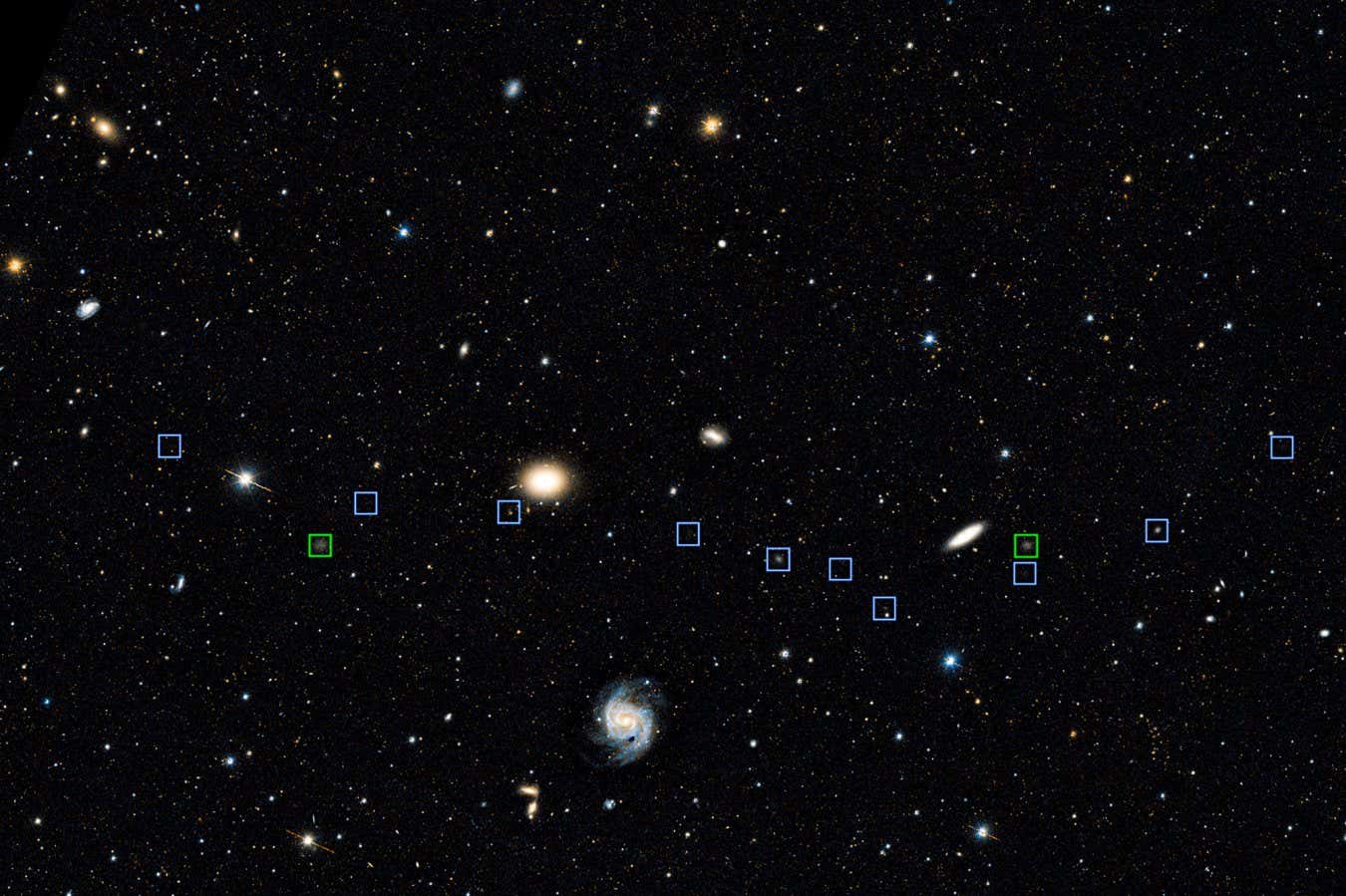Now Reading: Cosmic Bullet May Explain Mysterious Alignment of Distant Galaxies
-
01
Cosmic Bullet May Explain Mysterious Alignment of Distant Galaxies
Cosmic Bullet May Explain Mysterious Alignment of Distant Galaxies

Swift Summary
- A trail of 12 dwarf galaxies observed 75 million light years from the Milky Way originated from a head-on collision between two dwarf galaxies: NGC 1052-DF2 and NGC 1052-DF4.
- The collision occured approximately 9 billion years ago at a speed of 350 km/s, stripping gas from both galaxies as they passed through one another.
- Gas remnants clumped under gravity to form the distinct trail, nicknamed the “bullet dwarf.”
- Uniquely, none of the newly formed star clumps contain dark matter, contrasting wiht most galaxies where dark matter comprises over 90% of total mass.
- Scientists believe this occurs as dark matter does not interact with ordinary or gaseous matter during collisions. This supports theories that propose dark matter consists of particles unaffected by conventional interactions.
Image Caption: A line of galaxies formed after two dwarf galaxies collided head-on, ripping gas from each other (Source: Keim et al./DECaLS).
Indian Opinion analysis
This finding has important implications for astrophysics and our understanding of cosmic evolution and dark matter. India’s scientific community could draw insights on galactic formations relevant to ongoing space research at institutions like ISRO or collaborations in global projects like SKA observatory and LIGO India.
The detailed behavior observed in this cosmic event provides evidence supporting particle-based models for dark matter rather than choice explanations such as measurement errors in gravitational influence patterns. Such findings could pave the way for refining physical models used in both theoretical astrophysics and emerging technologies reliant on space science.
Collaborative projects with global observatories remain crucial if Indian researchers wish to contribute more actively to such breakthroughs while enhancing their role in exploring foundational science about universe genesis.

























